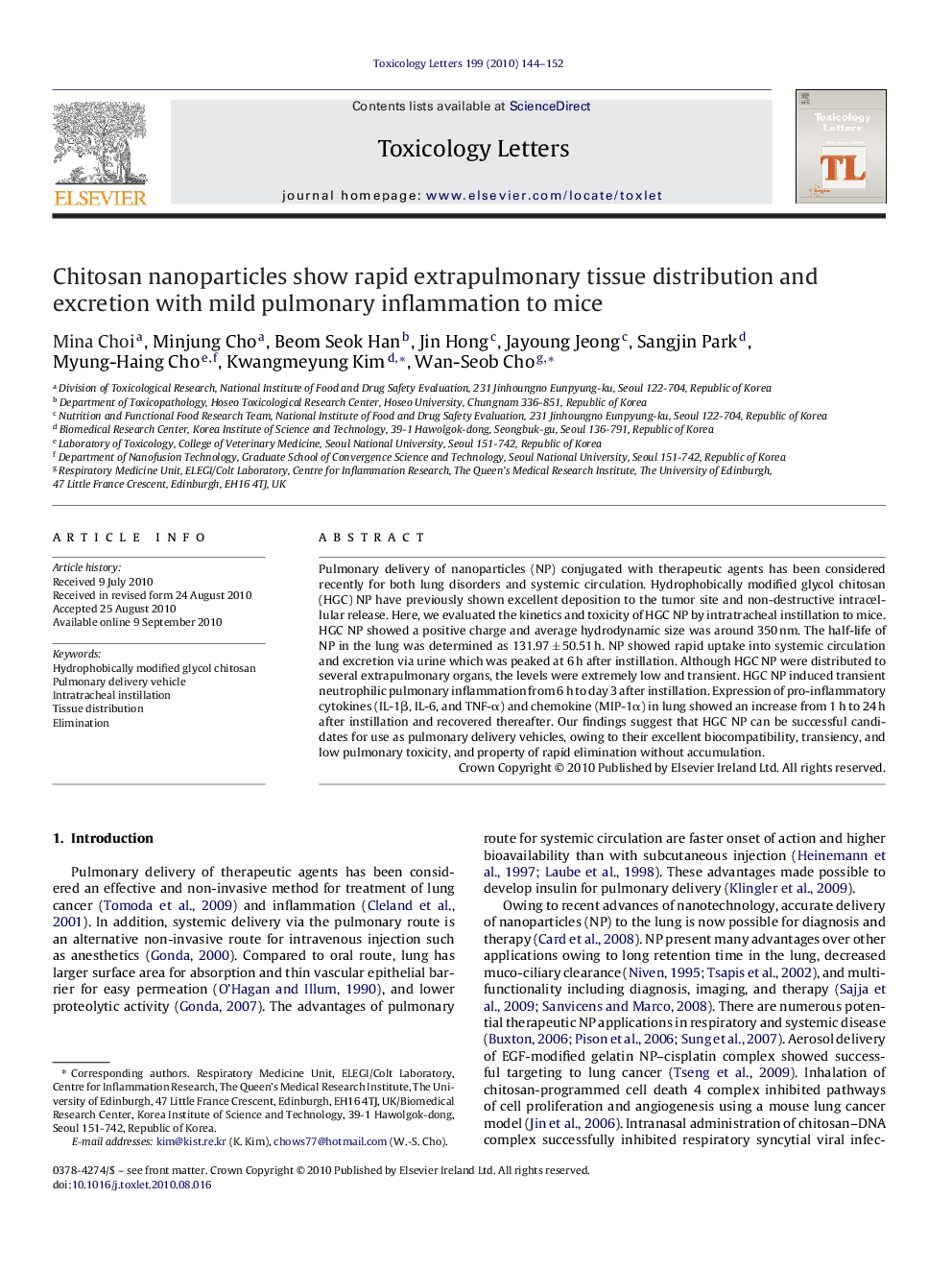| Article ID | Journal | Published Year | Pages | File Type |
|---|---|---|---|---|
| 2600034 | Toxicology Letters | 2010 | 9 Pages |
Pulmonary delivery of nanoparticles (NP) conjugated with therapeutic agents has been considered recently for both lung disorders and systemic circulation. Hydrophobically modified glycol chitosan (HGC) NP have previously shown excellent deposition to the tumor site and non-destructive intracellular release. Here, we evaluated the kinetics and toxicity of HGC NP by intratracheal instillation to mice. HGC NP showed a positive charge and average hydrodynamic size was around 350 nm. The half-life of NP in the lung was determined as 131.97 ± 50.51 h. NP showed rapid uptake into systemic circulation and excretion via urine which was peaked at 6 h after instillation. Although HGC NP were distributed to several extrapulmonary organs, the levels were extremely low and transient. HGC NP induced transient neutrophilic pulmonary inflammation from 6 h to day 3 after instillation. Expression of pro-inflammatory cytokines (IL-1β, IL-6, and TNF-α) and chemokine (MIP-1α) in lung showed an increase from 1 h to 24 h after instillation and recovered thereafter. Our findings suggest that HGC NP can be successful candidates for use as pulmonary delivery vehicles, owing to their excellent biocompatibility, transiency, and low pulmonary toxicity, and property of rapid elimination without accumulation.
